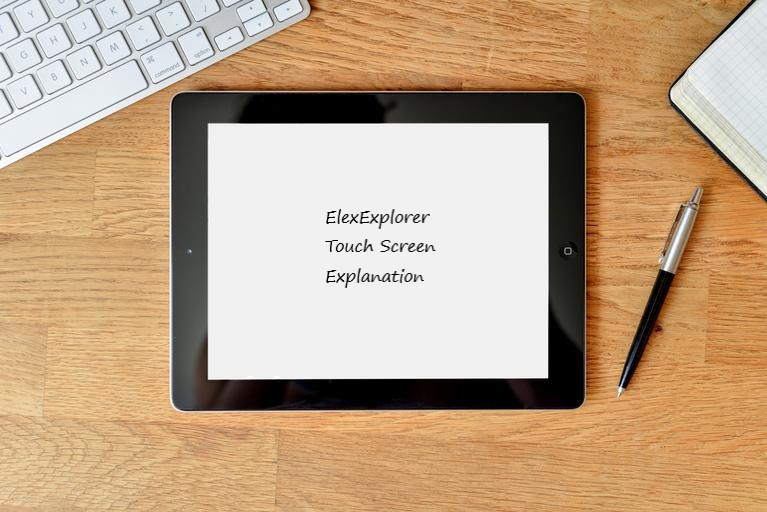

Touch screen
Do you remember those days when you are playing space-impact and snake mobile games on classic mobile phones? You might be tired at that time by pressing the keypad multiple times. But now you are using a keypad-less mobile phone. It happens only because of the invention of the ‘Touch Screen’.
Touch screen technology in electronic devices makes the revolution in ‘Human Machine Interface’ (HMI) technology.
It is being used generally in smartphones, computers, smart TV, smartwatches, etc. As we know a touch screen is a display screen that is sensitive to the touch of a finger or stylus.
In the initial days of a touchscreen, it is a generally resistive type that is less smooth. But after the invention of the capacitive touchscreen, this problem gets resolved. The capacitive touchscreen is very smooth as compared to the resistive touchscreen.
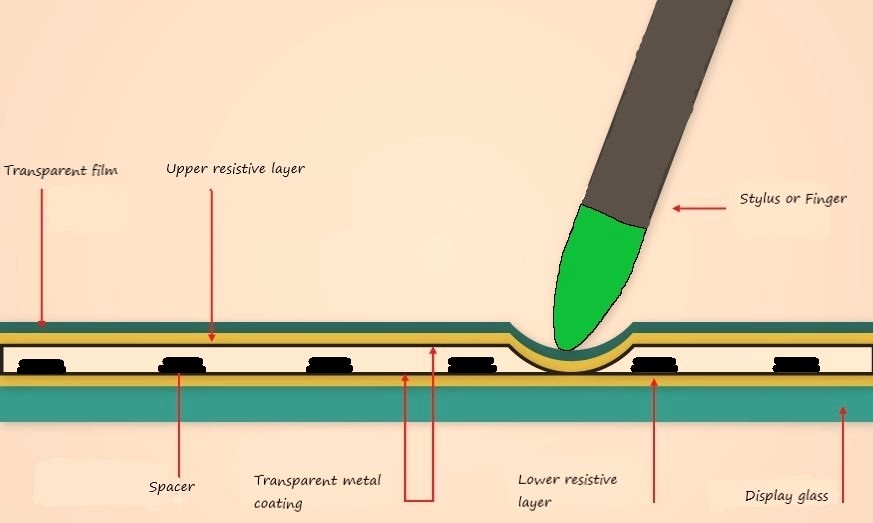
Resistive touch screen
Let’s have a look at these two touchscreens:
- Resistive touchscreen
- Capacitive touchscreen
Resistive touchscreen:
In the Resistive Touch Screen top layer is made of ‘Polyethylene’ (PET) and a rigid bottom layer made of glass. These two layers are coated with a conducting compound known as ‘Indium Tin Oxide’ (ITO) and then spaced with a spacer. When someone touches the surface, the flexible screen presses down and touches the bottom layer – just like pressing a keyboard. A programmed chip inside the screen determines the coordinates of the place you touch by finger or stylus.
This touchscreen is rigid and it does not have an external electric field effect on its operation. Because of this property nowadays it is being used in many automation machines like ATM, Ticket vending machine, etc. You can see the basic elements of the resistive touch screen in the image.
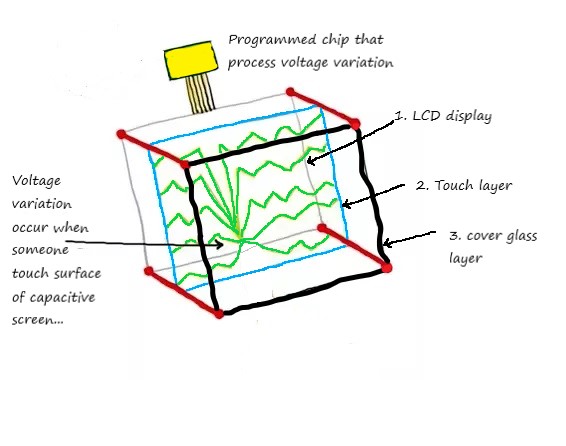
Electric field in Capacitive touchscreen
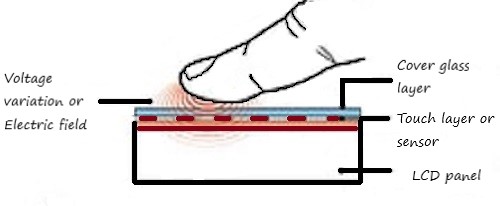
Finger on capacitive touchscreen
Capacitive touchscreen:
The resistive touchscreen has been replaced with a capacitive screen. Unlike a resistive touchscreen, it does not need pressure. Instead of this capacitive touchscreen can work with anything that holds an electric charge like human finger, skin, or smart pencils. It has two types:
- Projected capacitive touchscreen
- Surface capacitive touchscreen
A Surface capacitive touchscreen needs direct contact with a bare finger on the transparent cover glass layer whereas a Projected capacitive touchscreen allows the user to operate the screen with surgical gloves or thin cotton gloves in hand.
In modern smartphones, most of the touchscreen is acts as a Projected capacitive touchscreen when the user increases the sensitivity of touch.
Capacitive touch screens are popular nowadays in mostly display devices like smart TV, mobile phones, tablets, etc.
Why it is so popular and which thing makes it more smooth?
In capacitive touch screen mainly three layers are present – One is LCD panel at the bottom, second is touch layer in the middle and third is cover glass layer of the top. These layers work as electrodes. When you touch the upper surface of the capacitive screen electrostatic field of these electrodes changes and it causes you to perform operations on the LCD panel.
Now not all touchscreen devices use capacitive or resistive touchscreens. There is another one! It is an ‘Infrared touchscreen’.

Infrared touchscreen
Infrared touchscreen:
Some like it hot and some don’t. Infrared touchscreen falls in the latter category. Infrared touchscreen or IR touch screen devices support touch-based input just like others. But the way in which they identify input is unique. IR touchscreens identify touch input by looking at interruptions in a uniform beam of light.
IR touchscreens have a grid-like array of infrared LEDs and photodetectors (phototransistors or sensors) at the edge of the device. This grid array is continuously emitting infrared light. Human eyes are not able to see it. When you touch the surface, it creates a disturbance in this light. After that device analyzes to determine the point where the disturbance occurred; thus, allowing it to identify the precise point of contact.
IR touchscreen strength and durability are superior to other touchscreens. We found that when our smartphones fallen down and its screen get damaged even with gorilla glass. IR touchscreens will be an alternative to solve this problem. Whereas IR touchscreen technology is still in progress. Currently, few manufacturers are providing this kind of screen but these are not for our smartphones. So in the upcoming days, we will find this invention in our smartphones, TV, etc. It will make a big change in the future.
Thanks for reading. See you soon with another exploration!

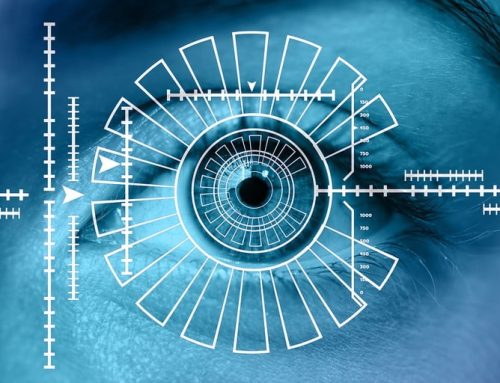
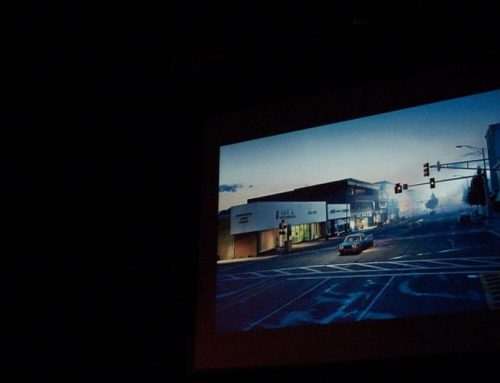

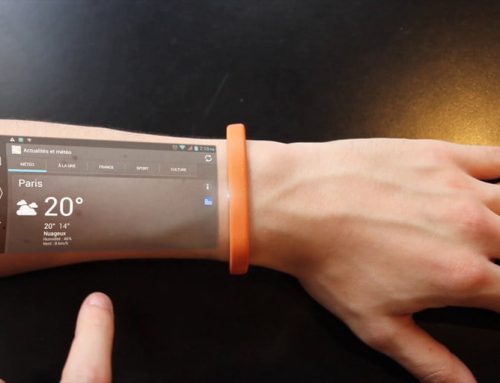

[…] To know more about touch screens click here. […]
[…] that a good quality digital photo frame also has a high-resolution display unit. Most of them are LCD (Liquid Crystal Diode) type. This type of display is thin enough that the digital frame is not […]
[…] panel is similar to an ordinary coffee machine panel. It contains few functional buttons and one LCD display to represent the relative parameters like heat, wireless connectivity status, […]